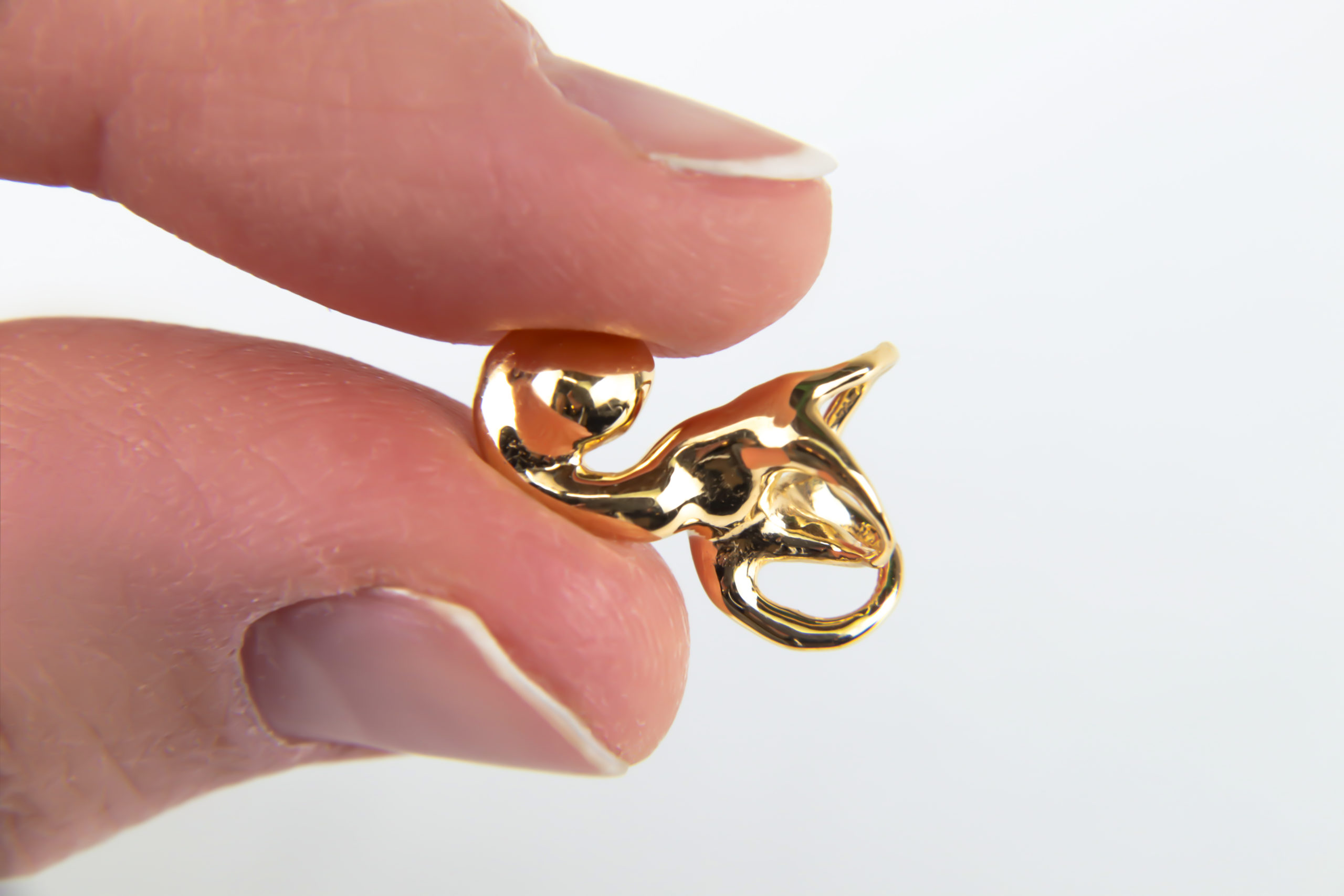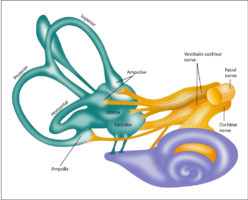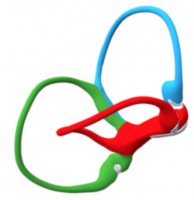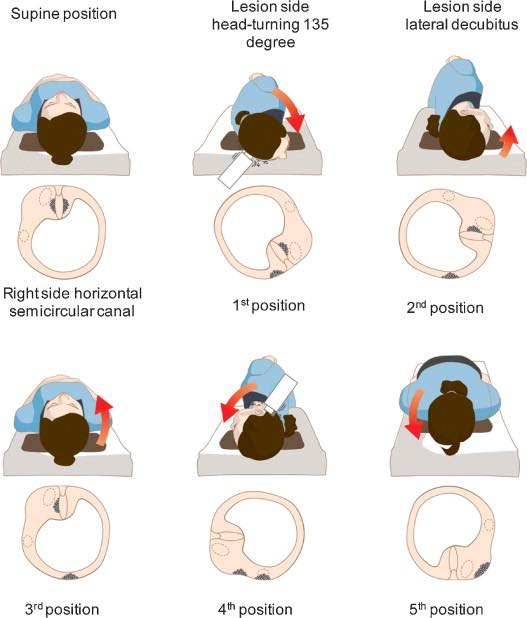Horizontal canal bppv
What is Horizontal Canal Benign Paroxysmal Positional Vertigo (HC BPPV)?
Horizontal Canal Benign Paroxysmal Positional Vertigo, also known as HC BPPV or Lateral Canal BPPV, is a type of positional vertigo. BPPV occurs when free-floating otoconia move in one of the semicircular canals (canalithiasis) or by otoliths adhered to the cupula, which is the membrane located at one end of each semicircular canal (cupulolithiasis).
What is Horizontal Canal Benign Paroxysmal Positional Vertigo (HC BPPV)?
The main symptoms of HC BPPV include recurrent brief and sudden episodes of positional vertigo, often with nausea and/or vomiting, provoked by a turn of the head/body, particularly from a midline or supine to a lateral or side-lying position. (Testa et al., 2012). Note that vestibular agnosia (impaired dizziness sensation due to issues such as TBI or older age) leads to a seven fold reduction in clinician recognition of BPPV, which is one reason why reported symptoms alone do not necessarily lead to proper diagnosis (Calzolari et al., 2020).
“The posterior canal is the most common canal affected (by BPPV), followed by the lateral (horizontal) canal. Diagnosis of the side affected is critical for successful treatment; therefore, suppressing visual fixation is essential to examination of these patients’ eye movement.” – Zuma E Maia et al., 2020

Top 4 Reasons Why HC BPPV Diagnosis Could Be Missed
- Limited assessment – Some clinicians only check the Dix-Hallpike but not the supine roll test when assessing for BPPV (Singh and Bhardwaj, 2020).
- Symptoms can vary – Some patients, particularly those with horizontal canal cupulolithiasis, may have nausea as a stronger symptom than vertigo or dizziness. Clinicians may consider gastrointestinal issues before vestibular diagnoses if they hear “nausea” but not “dizziness” in a patient report (Amboss, 2022). Of note, anti-emetic and anti-nausea treatment is more often needed prior to treating the horizontal canal cupulolithiasis variant of BPPV. (Hain, 2022)
- Less common makes it less familiar – Clinicians may mistake horizontal canal BPPV for an acute peripheral vestibular hypofunction (Castalucci et al., 2018), or they might mistake a cerebellar tumor for horizontal canal cupulolithiasis (Cho et al., 2017).
- Not using visual fixation removed conditions (such as infrared video goggles) – Ozel et al. (2022) just published that 66% of the peripheral nystagmus evoked by positional testing in patients with BPPV is suppressed by visual fixation. If you aren’t using infrared video goggles, you could missing vital eye movements that could lead to the proper diagnosis and next steps of treatment in these patients. Plus, the ability to record lets you review those eye movements for yourself and during in-person or remote discussions with colleagues, whose input can be so valuable, especially as we encounter more complicated patient cases.

3 Easy Steps to find the affected side in HC BPPV!
- Identify if the patient has canalithiasis or cupulolithiasis
- During the both sides of the supine roll test, if the patient’s nystagmus has a fast beat toward the ground (geotropic), then the patient likely has horizontal canal canalithiasis. An optional test to substitute for the supine roll test would be the upright head roll test (Malara et al., 2020), which can work in a complimentary way with other testing such as the Bow and Lean test described in Step 3.
- During both sides of the supine roll test, if the patient’s nystagmus has a fast beat away from the ground (apogeotropic), then the patient likely has horizontal canal cupulolithiasis
- Utilize symptom and nystagmus strength as a strategy for identifying the affected side if possible
- For canalithiasis, during the supine roll test, the side where the patient’s head was turned when they have the STRONGER symptoms and nystagmus is usually the affected side
- For cupulolithiasis, during the supine roll test, the side where the patient’s head was turned when they have the WEAKER symptoms and nystagmus is usually the affected side.
- If needed, utilize the Bow and Lean (or Sit to/from Supine) test when Step 2 doesn’t clearly indicate a side with stronger symptoms
- For canalithiasis, when the patient bows forward (or comes into long sit from supine), the direction of the fast beat of nystagmus seen indicates the affected side
- For cupulolithiasis, when the patient leans their head back (or lies down into supine from long sitting), the direction of the fast beat of nystagmus seen indicates the affected side (Choung et al., 2006; Lee et al., 2010; Wu et al, 2019).
Learn more about updated BPPV testing:
- The Bow and Lean Test by Danielle Tolman, PT, DPT of Vestibular Today
- The Loaded Dix-Hallpike Test (for improving the sensitivity of the Dix-Hallpike Test) by Jeff Walter, PT, DPT, NCS

Which Treatment for HC BPPV is Best?
Researchers are working hard to answer this question. One study by Correia et al. (2021) indicated that “Success rates were significantly better with Gufoni than with barbecue roll in geotropic Lateral Canal (LC)-BPPV and better with Gufoni-Appiani than barbecue roll and Zuma-e-Maia maneuvers in apogeotropic LC-BPPV.” Unfortunately, that study did not look at the Kim maneuver (Cupulith Repositioning Maneuver) for apogeotropic LC-BPPV, which may be effective regardless of whether the otoconia are stuck to the utricular or the canal side of the cupula. They did not include the Kurtzer Hybrid Maneuver, the Casani, the Li maneuver for geotropic nystagmus (also known as the 180 Degree Quick Roll), or forced prolonged positioning either. Zhao et al. (2021) found that the Li Maneuver for geotropic HC-BPPV was as effective as Gufoni Maneuver, but again there is only a single study comparing the two so far.
The reality is that most clinicians are going to use maneuvers that they feel confident providing, maneuvers which work for their patient’s body type and situation, and maneuvers for which they find they get effective results. For example, I use the Kim maneuver (pictured below) whenever I have a patient who won’t likely tolerate a brisk maneuver due to their level of nausea or sensitivity to self-motion at the time. NO PATIENT should need to be treated for BPPV every week for months and months – be sure to reassess if not clearing after at most 5 sessions of well-applied maneuvers and consider alternative diagnoses to ensure appropriate treatment or referral if needed. We look forward to more research in this area of HC-BPPV treatment!


Want to learn about the Kurtzer Hybrid Maneuver?
We recently discussed the Kurtzer Hybrid maneuver at our November Journal Club with Dr. Steven Tijerna, PT, DPT, from EvidenceCEU. It does not require that the clinician know which side is the affected side in LC-BPPV, nor does it require that the clinician be sure of whether the patient has canalithiasis or cupulolithiasis. Pros and cons are covered in our YouTube video from our Kurtzer-Hybrid Journal Club. While you’re at it, catch our latest Journal Club about Anterior Canal BPPV with Dr. Michael Teixido, too!
